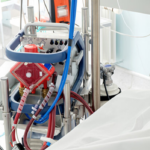
Anesthesia is a vital component of contemporary medical interventions, allowing patients to receive surgeries and other treatments without pain or suffering. The selection of anesthesia varies with the procedure, the patient’s health status, and the anesthesiologist’s skills. Dr. Amit Kumar Choudhary, a specialist in Critical Care Medicine, holding an MD in Anesthesia and a DrNB in Critical Care Medicine, explains the various types of anesthesia and their uses.
What is Anesthesia?
Anesthesia refers to a medical technique that temporarily suppresses sensation or awareness, enabling patients to receive surgical and medical interventions without feeling pain. It is applied by skilled professionals called anesthesiologists, who decide the right type and dosage depending on the patient’s history, type of procedure, and general health.
Anesthesia can be generally categorized into three types:
- General Anesthesia
- Regional Anesthesia
- Local Anesthesia
Each category has its own set of applications, advantages, and precautions.
General Anesthesia
What is General Anesthesia?
General anesthesia refers to a condition of induced unconsciousness when the patient is fully unaware and also not feeling pain throughout the procedure. General anesthesia is usually employed for serious surgeries like heart surgery, abdominal operations, and brain surgery.
How is General Anesthesia Administered?
General anesthesia is given intravenously (IV) or through inhaled gases. The patient is ventilated on a breathing machine during anesthesia. The anesthesiologist continuously monitors vital signs such as heart rate, blood pressure, and oxygen saturation to maintain safety during the procedure.
Advantages of General Anesthesia:
- Ensures total unconsciousness and pain relief.
- Permits surgeons to undertake complicated and long procedures.
- Prevents movement of the patient during surgery, which ensures accuracy.
Possible Risks and Side Effects:
- Nausea and vomiting on waking.
- Grogginess or temporary confusion.
- Sore throat from tube used for breathing.
- Unusual but serious side effects like an allergic reaction or difficulty in breathing.
Regional Anesthesia
What is Regional Anesthesia?
Regional anesthesia suppresses sensation in an area of the body, but leaves patients conscious and awake but without pain throughout a procedure. It is routinely applied for surgical procedures involving the lower part of the body, arms, or particular areas of the torso.
Types of Regional Anesthesia
Spinal Anesthesia – Applied for lower body operations like C-sections and orthopedic surgery. A local anesthetic is administered into the cerebrospinal fluid in the lower back, leading to temporary numbness.
Epidural Anesthesia – Often utilized during labor and lower limb operations. In contrast to spinal anesthesia, the drug is administered into the epidural space surrounding the spinal cord and can be administered continuously through a catheter.
Peripheral Nerve Blocks – This method consists of injecting an anesthetic close to a specific nerve or collection of nerves to impede feeling in a specific region, for example, the arm or leg.
Advantages of Regional Anesthesia:
- Shorter recovery than general anesthesia.
- Decreased post-operative pain and opioid consumption.
- Less risk of nausea and vomiting.
Possible Risks and Side Effects:
- temporary numbness or weakness in the affected region.
- Headaches (particularly with spinal anesthesia).
- Uncommon side effects like nerve injury or infection.
Local Anesthesia
What is Local Anesthesia?
Local anesthesia anesthetizes a small, localized area of the body without impairing consciousness. It is frequently employed for minor procedures like dental procedures, skin biopsies, and wound suturing.
How is Local Anesthesia Administered?
Local anesthetics, like lidocaine, are directly injected into the treatment area. Topical anesthetics (sprays or creams) are sometimes applied to the skin to numb it prior to minor surgery.
Advantages of Local Anesthesia:
- Few side effects and risks.
- Short recovery period.
- No effect on breathing or awareness.
- Possible Risks and Side Effects:
- Mild burning or pain at the injection site.
- Numbness or tingling that is temporary.
- Infrequent allergic reaction.
Selecting the Appropriate Type of Anesthesia
The selection of anesthesia is based on a number of factors, such as:
- The nature and length of the procedure.
- The general health and medical history of the patient.
- The surgeon’s and anesthesiologist’s advice.
Dr. Amit Kumar Choudhary, a specialist in Critical Care Medicine in Pune, stresses the need for a proper pre-anesthetic assessment to identify the safest and most effective anesthesia regimen for every patient.
Summary
Anesthesia is important to provide comfort and safety to patients during surgery. General, regional, or local anesthesia, the right one to use would depend on the particular needs of the patient and the procedure to be done. With improved anesthetic methods and close monitoring, contemporary anesthesia is safer and more efficient than ever.
For professional anesthesia services and critical care services, visit Dr. Amit Kumar Choudhary, MD in Anesthesia and DrNB in Critical Care Medicine, Pune. With his specialization, patients receive safe and comfortable experiences when they are undergoing different medical treatments.




